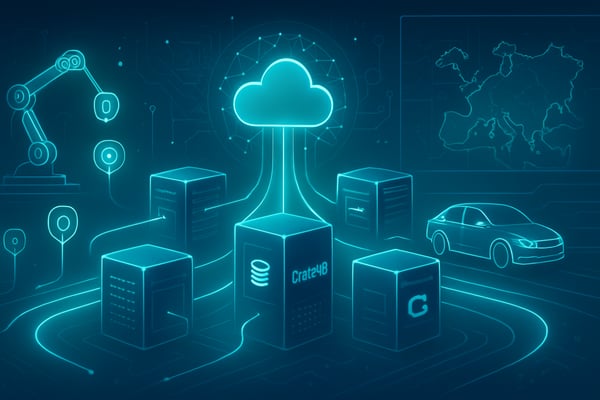As connected devices multiply, the volume of data coming from sensors, equipment, vehicles, and machines is exploding. Organizations need an IoT database that can ingest and analyze that data the moment it arrives. The reality is that many legacy architectures cannot keep up. They were never designed for large streaming workloads or advanced analytics on semi structured data.
Businesses working with IoT data want instant insight. They need to detect anomalies, monitor assets, optimize operations, and feed AI models with accurate information. This requires a platform that can scale effortlessly, respond to unpredictable data spikes, and provide advanced query performance without constant tuning and indexing work.
What Makes an IoT Database Different
Connected systems present unique challenges. The right IoT database delivers:
- High speed ingestion for millions of events per second
- Support for structured, semi structured, and unstructured data
- Time series analytics with high cardinality
- Fast aggregations and search on operational data
- Horizontal scalability with automatic resilience
- Standard SQL usage to simplify integration across teams
Without these capabilities, engineering teams wrestle with complex data pipelines and storage tiers that add cost and operational friction.
Why Traditional Databases Fall Short
General purpose relational databases struggle with high cardinality and fast moving data. NoSQL solutions improve ingestion performance but restrict analytics and force trade offs on consistency, storage efficiency, and query capability. Time series databases excel at compression but are limited when asked to run complex operational analytics or support free form queries on mixed data formats.
Teams end up stitching multiple systems together. Maintenance grows, latency increases, and insight slows down.
CrateDB as an IoT Database
CrateDB combines the speed of a distributed NoSQL engine with the power of SQL analytics. It was engineered to handle high velocity data while keeping all information searchable and available for real time decision making.
Key strengths for IoT use cases:
- Ingests streaming data at massive scale
- Automatically indexes data for fast querying
- Handles sensor payloads, logs, geospatial data, and AI enriched data in one system (see the multi-model approach)
- Executes aggregations and joins instantly on fresh data
- Supports hybrid workloads across edge, cloud, and on premises deployments
- Delivers built in fault tolerance so data availability is always guaranteed
With CrateDB, technical teams avoid the pitfalls of data silos, tiered architectures, and manual optimization work.
Real World Applications
Organizations use CrateDB as their IoT database for:
- Smart manufacturing: live monitoring, predictive maintenance, quality control. See CrateDB for manufacturing >
- Smart mobility: fleet management, routing optimization, safety systems. See CrateDB for transportation >
- Energy and utilities: grid forecasting, consumption analytics, device telemetry.
See CrateDB for energy > - Industrial automation: equipment uptime, production analytics, remote service
These scenarios require continuous visibility and the ability to analyze huge amounts of operational data instantly. CrateDB offers that capability in a unified platform.
How CrateDB Integrates into IoT Architectures
CrateDB fits neatly into existing ecosystems. It connects to data ingestion services, MQTT brokers, edge gateways, event streams, and visualization layers. Teams can use familiar SQL tools and BI applications without rewriting pipelines or retraining staff.
The result is faster deployment and lower operational overhead.
Conclusion
Selecting the right IoT database is essential to remain competitive in a connected world. Businesses that rely on batch processing or traditional data stores risk missing issues and opportunities as they develop.
CrateDB empowers companies to act immediately on their IoT data with a scalable, analytics ready solution that supports all data types, all in one place. It allows you to achieve more than just data storage. It enables real time intelligence.
If you want to learn more, read how CrateDB supports your streaming analytics projects.


